Having trouble producing precise round parts on time and within budget? Delays and cost overruns often come down to one thing: not fully understanding the manufacturing process. Mastering turning is the key to consistent, high-quality results.
Turning is a subtractive machining process used to produce cylindrical parts by rotating the workpiece while a stationary cutting tool removes material. The tool moves along the part’s length and diameter to achieve the desired geometry.
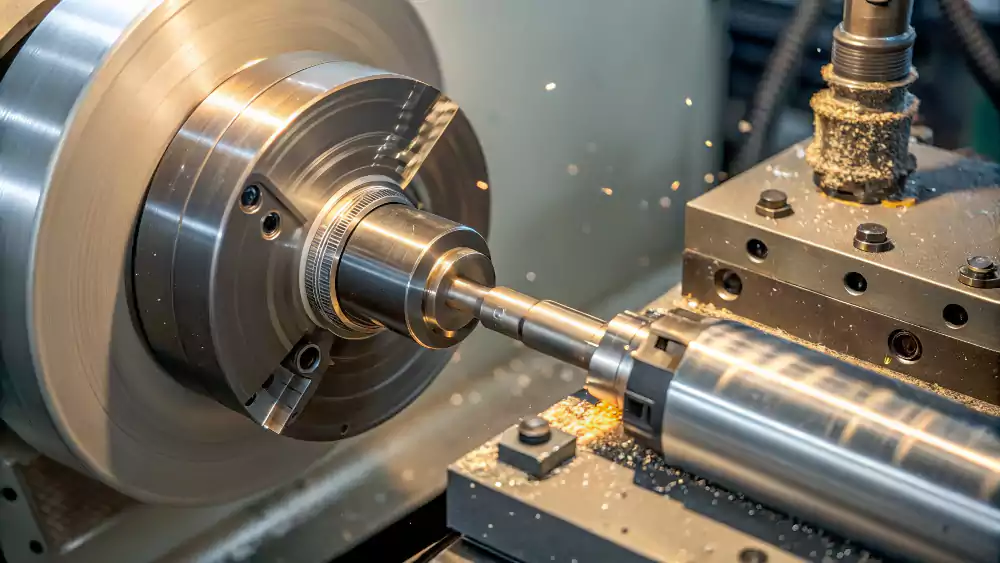
You don’t have to be a machinist to get better parts—just understanding how turning works can help you avoid delays, control costs, and improve consistency.
What is CNC Turning?
Manual lathes are slow, require skill, and are prone to human error. CNC turning automates the process, offering speed, accuracy, and unmatched repeatability.
CNC turning uses a computer-controlled lathe to precisely machine parts. A G-code program controls the tool paths, spindle speed, and feed rates, ensuring that every part matches the design exactly.
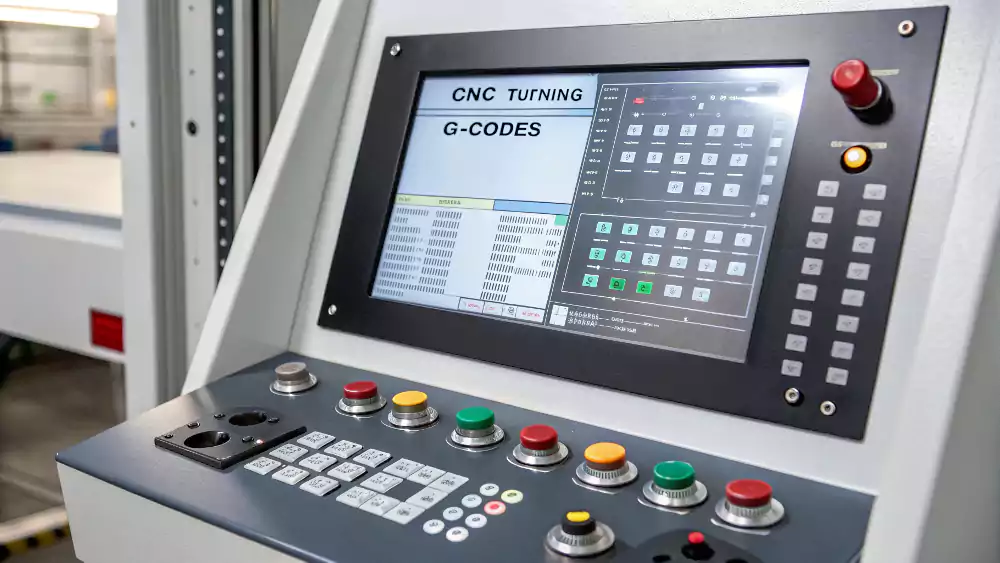
My transition from manual to CNC turning unlocked a new level of accuracy and scalability—making tight-tolerance, complex parts reliably repeatable.
Why CNC Beats Manual Turning?
During my time on the shop floor, I saw how manual machinists struggled with complexity. CNC turning transformed production. Here’s why:
- Accuracy: Eliminates manual measurement errors
- Speed: Tool changes and operations are automated
- Complexity: Handles intricate geometries with ease
- Consistency: Every part is exactly the same
| Feature | Manual Turning | CNC Turning |
|---|---|---|
| Precision | ±0.005" | ±0.001" |
| Setup Time | 30–45 min | 5–10 min |
| Part Complexity | Low | High |
| Operator Skill | Expert | Basic Training |
CNC turning is ideal for high-volume, precision parts. At Allied Metal, we’ve cut lead times by 40% using Swiss-type CNC lathes for small-diameter components. Toolpath planning1 is vital—it prevents crashes and reduces cycle times.
How Does the Turning Process Work?
You send a CAD file—what happens next? Here’s a behind-the-scenes look at how turning works.
The raw material (workpiece) is clamped into a chuck and spun at high speed. A fixed cutting tool then removes material along the X and Z axes to form the final geometry.
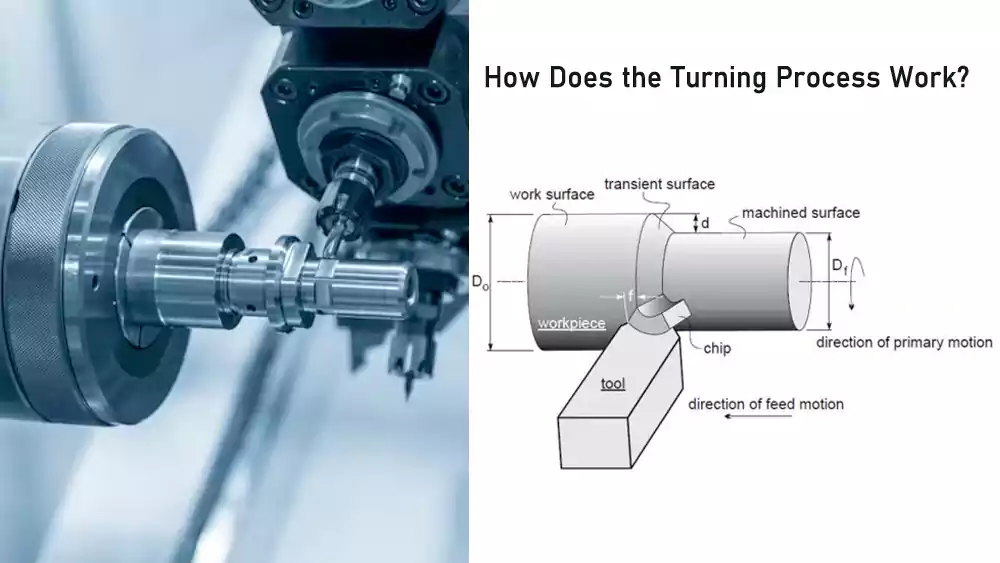
Think of it like peeling a spinning potato with a super-precise peeler. In turning, the same principle applies—except with metal and micron-level precision.
Key Process Elements
- Workholding: Keeps the part stable and aligned
- Tool setup: Must suit the material and part shape
- Cutting passes: Usually roughing, then finishing
- Coolant: Reduces heat and improves tool life
In one case, poor clamping caused a wobble—leading to an entire batch being scrapped. Proper setup matters.
What Are the Stages of Turning?
Pressing “Start” doesn’t yield a perfect part. Machining is a staged process.
Turning typically involves three stages: roughing, semi-finishing, and finishing—each with distinct speeds, tools, and depths.
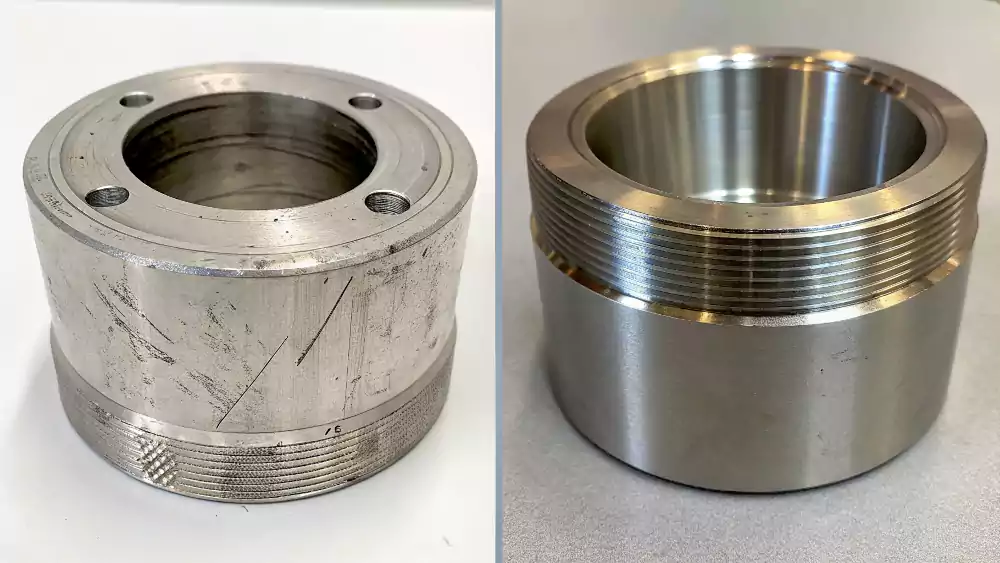
Stage Breakdown
- Roughing: Quickly removes excess material
- Semi-finishing: Brings the part near final size
- Finishing: Achieves smooth surfaces and tight tolerances
Incorrect speeds during finishing can cause chatter2. Staging isn’t optional—it’s essential.
What Are the 9 Main Types of Turning Operations?
Most parts have complex shapes. Turning includes many distinct operations to produce these features.
From simple cylinders to threaded or grooved profiles, turning operations allow for versatile part design.
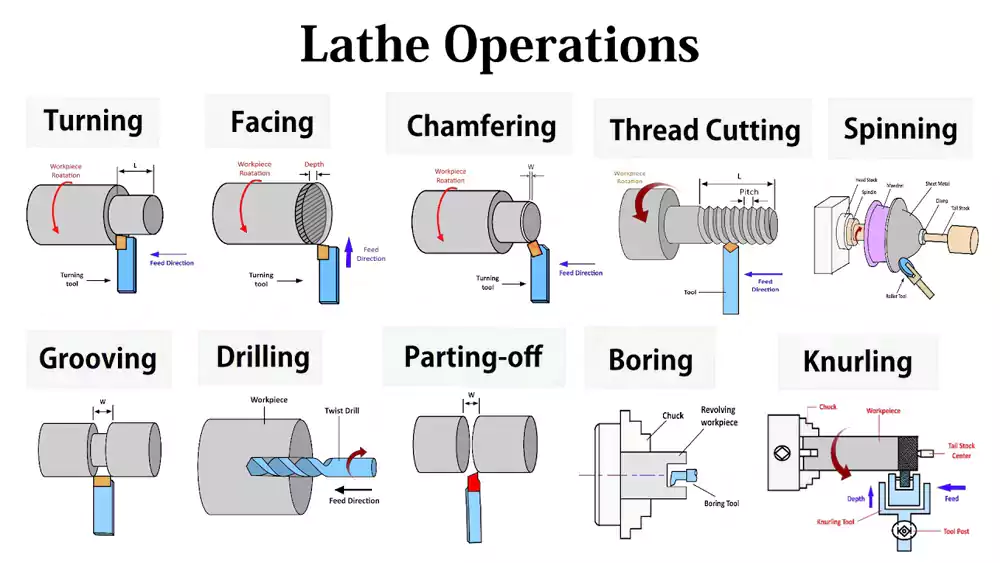
Understanding these operations helps bridge the gap between your design and manufacturing strategy.
| Operation | Description |
|---|---|
| Facing | Flattens the end of the part |
| Straight Turning | Reduces diameter uniformly |
| Taper Turning | Produces conical shapes |
| Contour Turning | Creates complex curves |
| Grooving | Cuts slots or channels |
| Threading | Makes internal/external threads |
| Drilling | Adds axial holes |
| Boring | Enlarges existing holes |
| Parting-Off | Cuts off the finished part |
What Materials Are Best for Turning?
Material choice affects cost, machinability, and performance.
Common turning materials include aluminum, steel, brass, titanium, and engineering plastics. The ideal choice depends on strength, weight, corrosion resistance, and thermal demands.
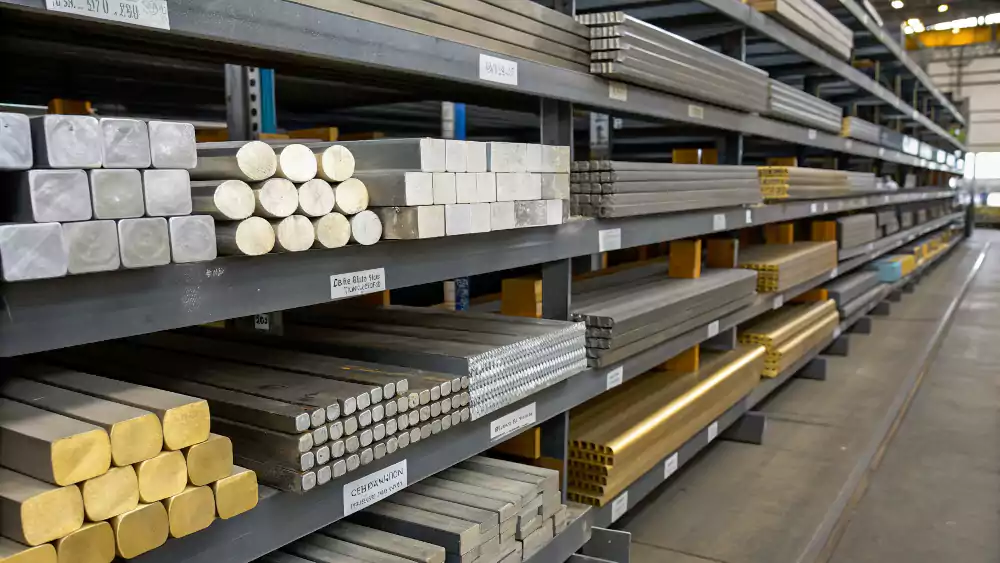
Common Turning Materials
| Material | Properties & Machinability | Applications |
|---|---|---|
| Aluminum | Light, corrosion-resistant3, easy to machine | Housings, shafts |
| Stainless Steel | Strong, corrosion-resistant, tougher to cut | Medical parts |
| Carbon Steel | Durable, cost-effective, decent machinability | Gears, fasteners |
| Brass | Low friction, easy to cut | Connectors, fittings |
| Titanium | Strong, biocompatible4, hard to machine | Aerospace, implants |
| Delrin (POM) | Stiff, stable, smooth finish | Bearings, gears |
| PEEK | High-temp, chemical resistant | Seals, high-end parts |
Material Comparison
| Material | Machinability | Strength | Surface Finish |
|---|---|---|---|
| Aluminum | Excellent | Medium | Smooth |
| Mild Steel | Good | High | Smooth |
| Stainless | Moderate | Very High | Fair |
| Titanium | Poor | Very High | Good |
| Delrin | Excellent | Low | Very Smooth |
What Tools and Equipment Are Used?
The lathe is the core, but cutting tools make the magic happen.
A CNC lathe holds and spins the workpiece. A tool turret rotates carbide inserts for cutting. Chucks or collets secure the part.
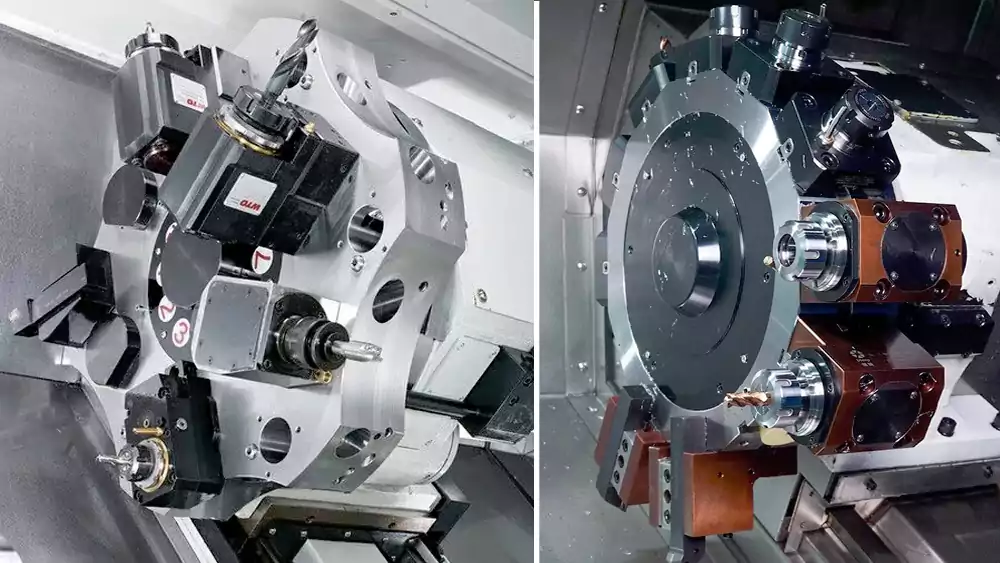
The Lathe
It spins the part and positions tools with micron precision. Live tooling expands functionality to include off-axis features.
Workholding
Chucks are standard. Collets are used for small, precise work. Proper grip prevents slip and vibration.
Cutting Tools
Carbide inserts are chosen for each operation and material. The turret switches tools automatically based on the G-code.
What Software Is Used in CNC Turning?
Your design starts as a 3D model in a CAD file. How does that digital file tell a machine how to move? Specialized software is the critical bridge that translates your engineering vision into physical motion.
Two software types drive turning: CAD (design) and CAM (manufacturing strategy). CAD (Computer-Aided Design) software is used to create the 3D part model. Then, CAM (Computer-Aided Manufacturing) software analyzes that model to generate the optimal toolpaths and the G-code that directs the CNC lathe.
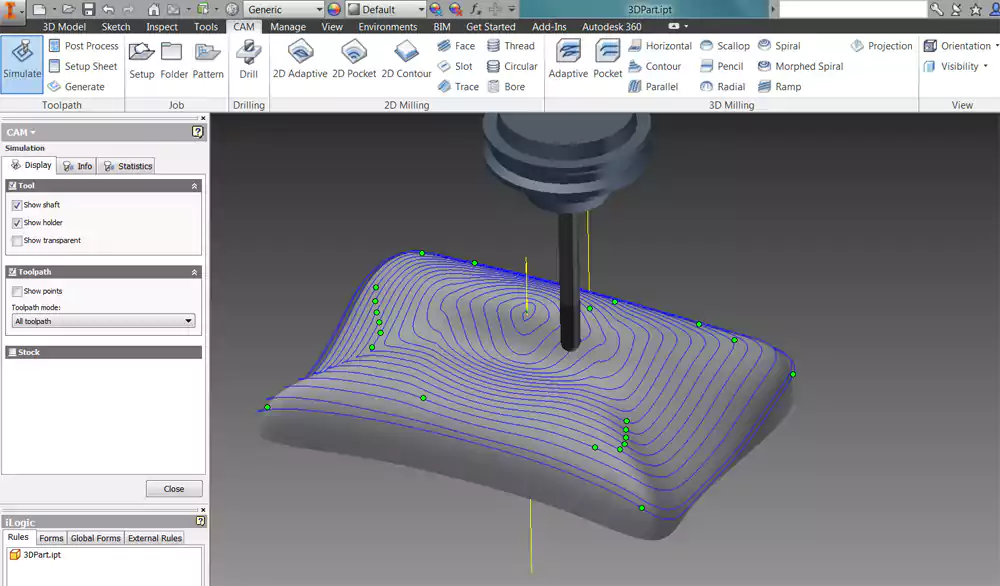
CAD: The Blueprint
This is the world where engineers like David live. Using software like SolidWorks, Inventor, or Fusion 360, you create the precise digital model of your part. A clean, well-defined CAD model is the essential starting point for the entire manufacturing process. When you export this as a universal file type like a STEP file, it contains all the geometric information we need to begin our work.
CAM: The Strategy
This is where the machinist’s expertise comes in. When I receive a CAD file, I import it into my CAM software. The CAM system allows me to plan the entire manufacturing strategy. I select the right tools from my virtual library, define the sequence of operations, and set the cutting parameters like speed and feed rate. The software simulates the entire process, showing me exactly how the part will be cut. This lets me optimize the toolpaths for efficiency, catch any potential collisions, and ensure the final part will be perfect before a single piece of metal is cut. Once the strategy is set, the CAM software outputs the G-code, the language the machine understands.
What Are Key CNC Turning Parameters?
If you want to understand the factors that drive cost and quality, it helps to know about a few key numbers. Understanding these parameters can help you have more productive conversations with your machine shop.
The three most important parameters in turning are Spindle Speed (how fast the part spins), Feed Rate (how fast the tool moves), and Depth of Cut (how much material is removed per pass). A machinist carefully balances these to optimize for either speed or quality.
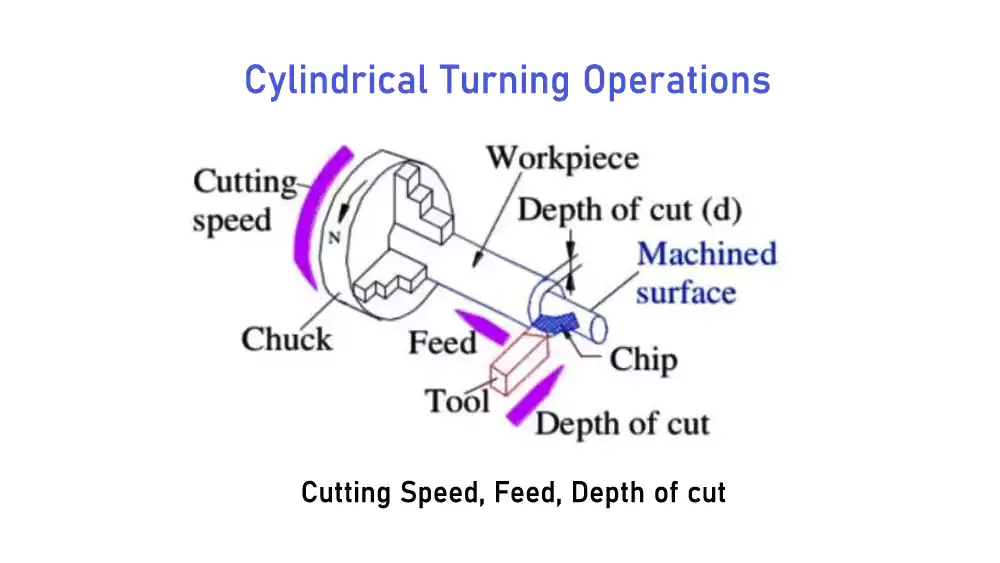
| Parameter | Impact |
|---|---|
| Spindle Speed5 | Affects surface finish and tool wear |
| Feed Rate6 | Influences cycle time and finish |
| Depth of Cut | Controls material removal rate and tool load |
Example Ranges (Aluminum)
| Parameter | Typical Value |
|---|---|
| Cutting Speed | 150–250 m/min |
| Feed Rate | 0.1–0.3 mm/rev |
| Depth of Cut | 1–5 mm |
| Spindle Speed | 1000–3000 RPM |
Design Tips for Turned Parts
Better designs equal lower cost and faster lead times.
Follow DFM (Design for Manufacturability) tips: add corner radii, loosen unnecessary tolerances, simplify features.
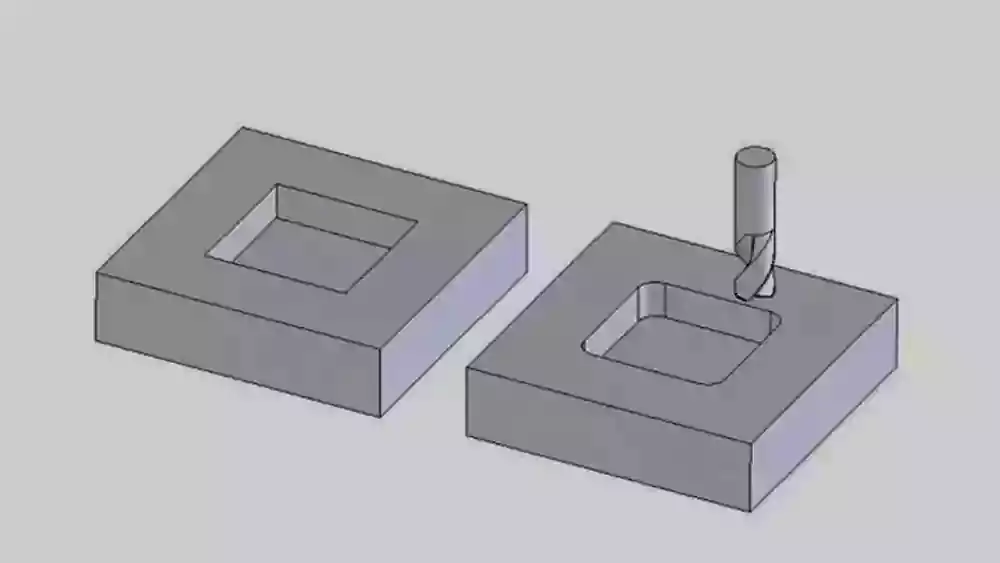
Best Practices
- Internal Radii: Avoid sharp corners
- Tolerances: Use only where needed
- Length/Diameter Ratio: Avoid long, thin parts
- Thread Length: Keep under 2× diameter
- Feature Simplicity: Match tools, reduce passes
Practical DFM Principles
From prototyping to production, these rules prevent headaches:
Tolerancing
- Specify critical dimensions only
- Standard tolerance: ±0.005"
- Precision tolerance: ±0.001" (adds cost)
Feature Design
- Groove width > 1.5x depth
- Minimum bore diameter: 0.06"
- Thread lengths under 2x diameter
Material Considerations
- Avoid hardened materials unless necessary
- Specify stock sizes to minimize waste
- Consider secondary operations
Cost-Saving Techniques
- Design to standard tool geometries
- Allow larger corner radii
- Avoid interrupted cuts where possible
We provide clients with a checklist before quoting. One medical device company reduced part cost 30% by increasing their minimum radius from 0.005" to 0.015" – no functional impact.
Turning vs. Machining
People often use these terms as if they mean the same thing, but they don’t. This can sometimes cause confusion. Let’s quickly clear it up so you can speak the shop’s language with confidence.
Machining is the broad, general term for any manufacturing process that removes material to shape a part. Turning is a specific type of machining where the workpiece rotates and the tool is stationary. Other common machining processes include milling, drilling, and grinding.
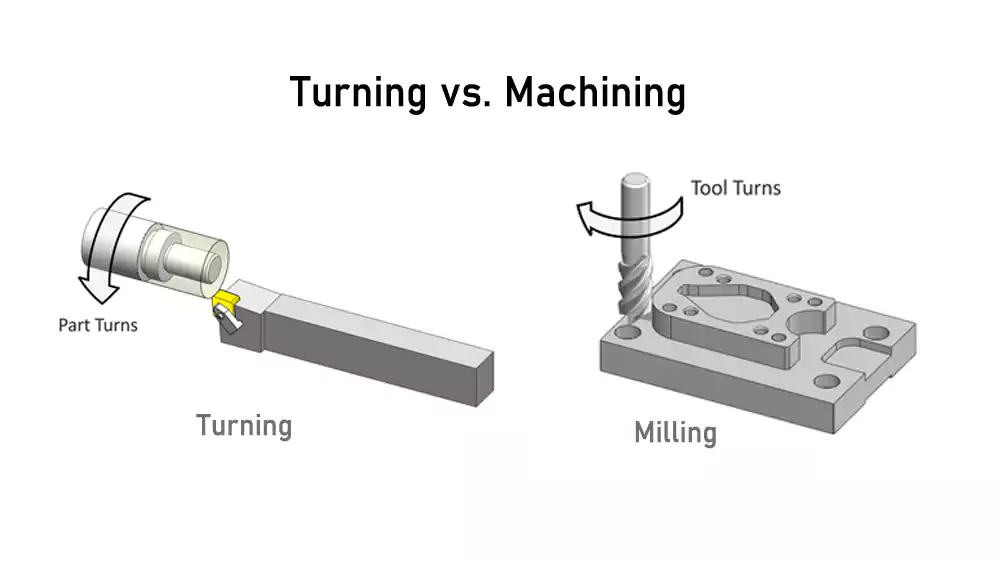
I like to use the analogy of "vehicles" and "cars." All cars are vehicles, but not all vehicles are cars. In the same way, all turning is machining, but not all machining is turning.
- Machining is the parent category. It includes every process where we cut material away.
- Turning is for creating parts with cylindrical features. The workpiece spins.
- Milling is another type of machining, typically for creating flatter or more prismatic parts with pockets, slots, and holes. In milling, the workpiece is stationary and the cutting tool spins.
Many modern components, especially in fields like industrial automation, require both turning and milling operations. We often produce these on advanced multi-axis machines that can perform both processes in a single setup. Understanding the basic difference helps you identify the primary process needed for your part, which is the first step toward getting an accurate quote.
How Allied Metal Can Help?
Finding a manufacturing partner who understands your needs for quality, speed, and communication is a major challenge. We built our entire shop to solve that problem for busy engineers like you.
At Allied Metal, we specialize in precision CNC turning for demanding industries like robotics, automation, and aerospace. We provide fast quotes from your CAD files, offer expert design for manufacturability (DFM) feedback, and guarantee parts that meet your tightest tolerances.
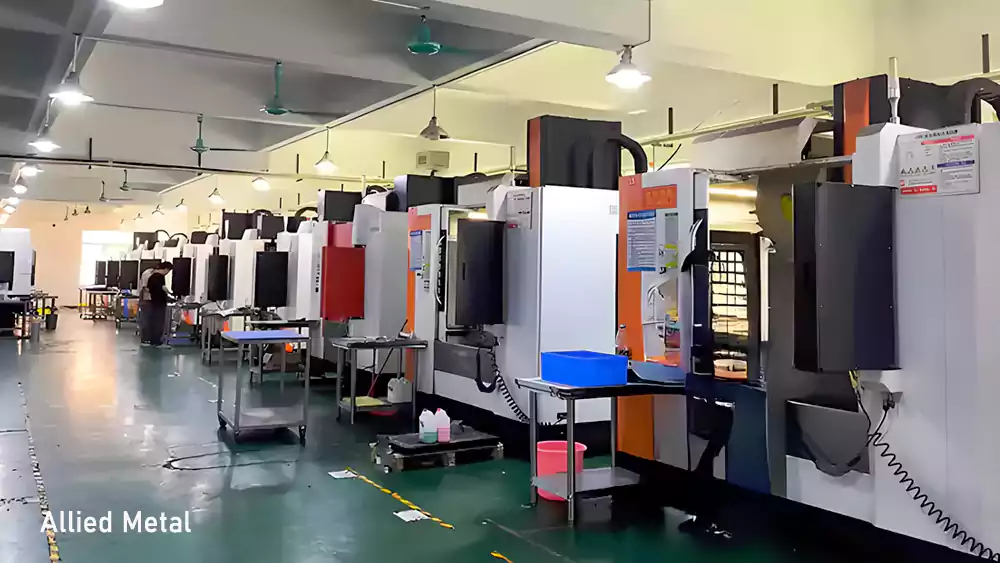
We offer fast quotes, expert DFM review, and guaranteed quality. Our ISO-certified processes, on-machine inspection, and lights-out production ensure reliable, scalable manufacturing. We thrive on the complex, tight-tolerance work that others can’t handle. If you have a turning project on the horizon, I invite you to send us your file.
Your Precision Turning Partner
We can address the specific challenges of your custom parts:
Tolerance Assurance
- ISO 9001-certified processes
- On-machine probing
- First-article inspection reports
Rapid Quoting
- Upload drawings for instant quotes
- Experienced engineers review files
- Design optimization suggestions
Confidentiality Protocols
- Secure document transfer
- NDA options
- Isolated project teams
Efficiency Focus
- Automated tool changers
- Lights-out production
- Kanban inventory programs
We recently helped an automation client reduce lead times from 6 weeks to 10 days through simultaneous engineering and toolpath optimization. Our secure client portal provides real-time order tracking – no more delivery surprises.
Conclusion
Turning is fundamental to modern machining. By understanding how it works, choosing the right materials, and designing for manufacturability, you’ll get better results, faster. Whether you’re prototyping or scaling, CNC turning remains the go-to solution for precise, cost-effective round parts.
-
Learn about toolpath planning to see how it minimizes errors and optimizes production cycles. ↩
-
Discover strategies to prevent chatter, ensuring high-quality machining results and improved surface finishes. ↩
-
Understanding corrosion resistance can help you choose the right materials for durability and longevity in various applications. ↩
-
Exploring biocompatibility is crucial for selecting materials in medical applications, ensuring safety and effectiveness. ↩
-
Understanding Spindle Speed is crucial for optimizing machining efficiency and achieving better surface finishes. ↩
-
Exploring Feed Rate can help you enhance cycle times and improve the overall quality of your machined parts. ↩

